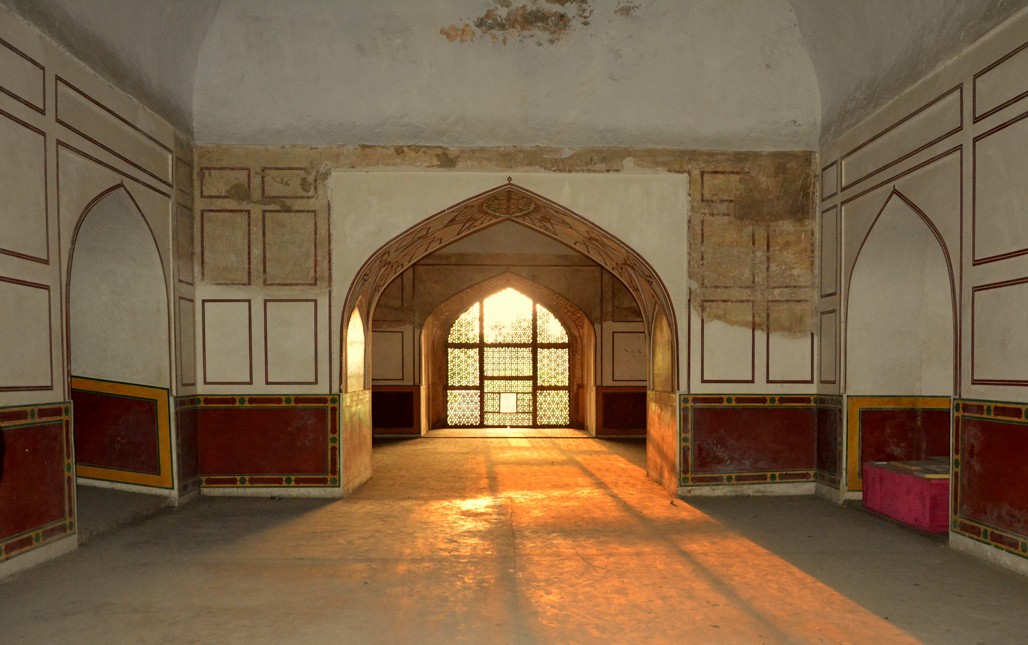
To this day, the Summer Palace never gets warm even in hot weather

Those who have been to the Lahore Fort must have seen the Diwan-e-Aam, Jahangir’s Quadrangle, and the Mirror Palace (or Sheesh Mahal). But not many people would have had the chance to visit the basement of the Sheesh Mahal because it is largely kept out of public sight.
A huge basement area, the place was home to the Summer Palace that was built in Mughal Emperor Shah Jahan’s times for the royal family who could reside here in summer season.
As its name suggests, the palace was constructed in a way that it would remain cool during the harsh summers thanks to an extra floor laid underneath.
Originally, between the two floors, a sewerage system had been installed through which the water from the nearby river Ravi would run, thus keeping the floor above cool. This was done in order to protect the delicate feet of the princesses and queens from burning.
To this day, the Summer Palace never gets warm even in hot weather. As you open the doors of the Palace, you are embraced by a cool breeze. The ventilation system has been designed in a way that the area stays cool and no one can feel suffocated.
The dome-shaped ceilings are another marvel of the Summer Palace. The astounding part is that these were built without the use of iron or wooden beams or even the cement. These were made of split Bengali gram, white lentils, clay, jiggery, eggs, dried grass, lime plaster and small bricks (found in all Mughal monuments). This mortar kept the small bricks intact and the place cold. It is said that the mortar came in handy in keeping insects and moths away.
Perhaps, the most incredible technique employed inside the Palace is the ‘echo’ system because of which a slightest whisper could be heard from a distance. This was part of the kings’ surveillance system in those days; it helped them keep tabs on any intrigues happening around the palace. Moreover, the footsteps could be clearly heard. A similar system is present at the Shahi Hammam inside the Delhi Gate.
There are two openings in the Summer Place that lead to the Sheesh Mahal. Initially, it boasted 42 water cascades and fountains, all of which have become redundant now due to negligence on the part of the authorities.
Historians claim that special perfumes and rose water were mixed into the water channels so that the palace would remain aromatic. The water from the said fountains ran underneath the floor of the palace and was drained into the river Ravi.
Furthermore, these fountains were made of the most expensive stones brought from different parts of the world. Sadly, these were damaged in the riots and the various transitions that the palace went through.The palace was adorned with intricate marble inlay work known as pietra dura art. The walls and ceilings were ornamented with silver, gold and fresco paintings some of which are still to be found here. A well that served to provide for fresh water was also made inside the Summer Palace but it dried up overtime.
The entire palace is a maze. One can easily get lost in its labyrinthine rooms and corridors. It was so designed in order to escape any attack by the enemies.
The palace also houses a secret room, at the mezzanine floor, which was only for the king. A window in that room opened towards the Ravi. During wars, the king would sit there and observe the movement of the enemies. Additionally, secret tunnels had been dug inside the palace that would allow a safe exit to the royal family members in the event of an attack.
The Summer Palace was also known as Pari Mahal (Fairy Palace). During the British era, it was afforded a brand new entrance from the elephant stairs which we use now to access it.
On my recent visit, I was surprised to find that the entire palace was intact; it was only covered with layers of dust. It seemed as if it had not been cleaned since ages. It was pitch dark inside. The fresco on some of the walls was still visible, though much of it had vanished.
The sad part is that this hidden monument is not open to public, which is also why you find no information about it on the internet also. I was lucky enough to come across a guide who told me all the details about the palace and was kind enough to escort me to it.
I strongly urge the Walled City of Lahore Authority to open this place for the public and make it a tourist spot.